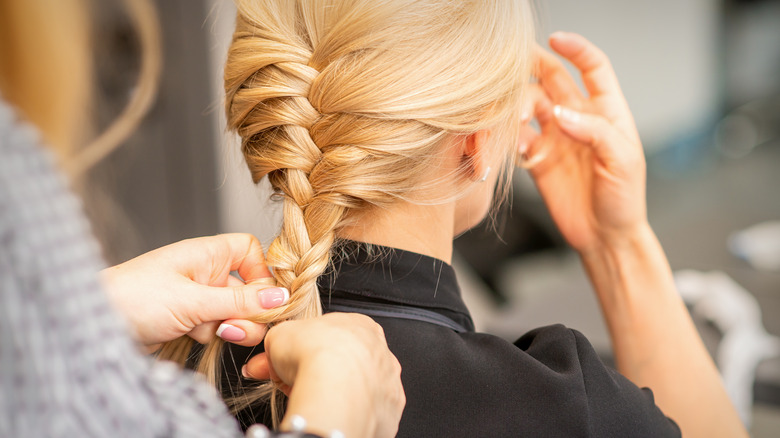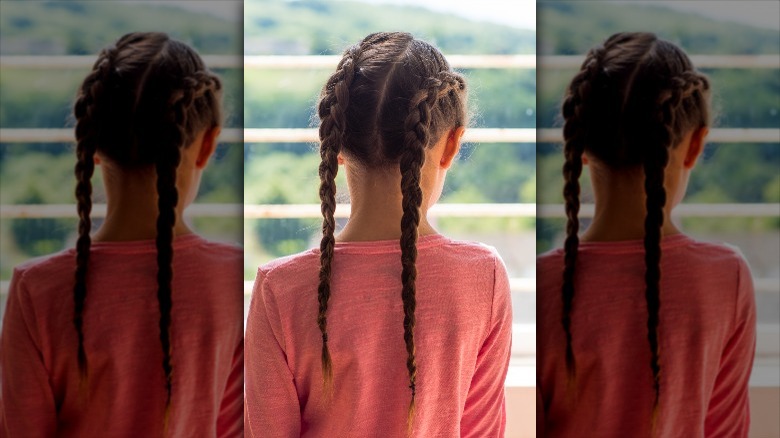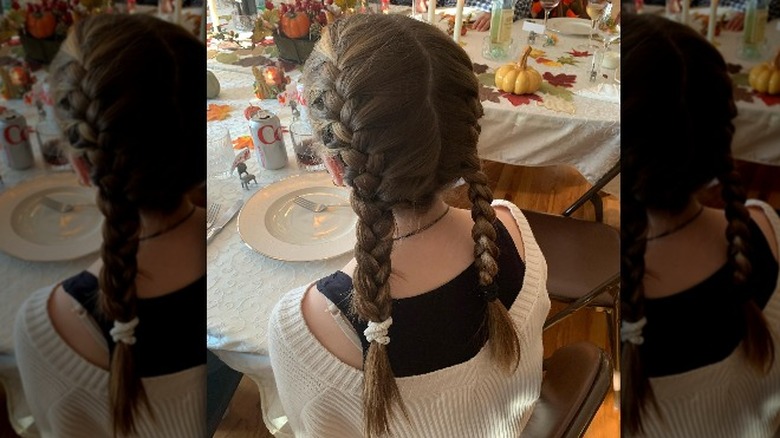How Are French And Dutch Braids Different?
Braids are so much fun! From Zendaya to Rihanna to Blake Lively, some of the most beloved celebrities we can think of are flaunting various braided looks, proving that these hairstyles are super trendy. Many people like to rock the sleek pony-braid hairstyle, one of the most well-loved braid styles to wear for versatile day or night looks.
There are so many types of braids that it can be challenging to keep up with all the trends. Even we can admit that it's challenging to remember how to do a fishtail braid, or decide which of the chic braided hairstyles to do when getting ready for work, brunch with friends, or a night out. But there are two braids that never go out of style and look great with various outfits; French and Dutch braids are both timeless, so they're worth learning to make. While these two braided hairstyles look somewhat similar, they're not identical. So, what's the difference between French and Dutch braids?
Dutch braids stick out over your hair
Dutch braids are super cute, and they're a popular hairstyle, as there are more than 325,000 posts devoted to #dutchbraids on Instagram at the time of writing. Bold yet adorable Dutch braids look like they're lying above the rest of the hair on your head — you should be able to instantly feel the braided texture when touching any part of the Dutch braid.
Anyone who wants to learn how to put their hair in Dutch braids can find tutorials on YouTube. For example, a YouTube account called EverydayHairInspiration shared a video explaining how to Dutch braid your tresses. According to the YouTuber, you should begin by brushing your locks, then parting them into a middle part. Next, use a hair tie or clip to keep the side you aren't working on yet in place. When you're ready to begin the Dutch braid, take a small part at the front of your hair at a triangular angle and divide it into three parts while holding it up facing where the braid should be. Then, start making a braid, twisting the hair under the main part of the braid instead of over, and continue braiding your locks while adding some strands of hair into each step of the braid as you go. Once you run out of strands to incorporate into the braid, braid your locks as normal, and tie the end with a hair tie. Then, repeat the process on the other side.
French braids are flat against the head
French braids are another well-liked braid option, and they're similar to Dutch braids because they also involve adding other strands of hair into the braids. However, instead of having the braid stick out over the hair, French braids appear flat against the head for a more subtle, understated appearance. This is achieved by braiding the hair overhand instead of underhand (per Yahoo). People tend to confuse these two hairstyles due to their similar styles, but it's worth learning how to master both braids.
You can find many French braid tutorials on YouTube, too, and a YouTube channel called Drakes Nest explains the steps for this hairstyle in a video. Starting with your locks down in a middle part, you should tie back or up the section that you aren't braiding first. Then, grab a triangular piece of hair and keep that section against your head and start braiding it like you usually would in an overhand manner. Next, add some strands from the rest of your hair into the middle piece over the braid as you work on it, and keep going and secure it with a hair tie. Once you're done with that side, repeat the steps on the other side!
Therefore, the difference between Dutch and French braids comes down to the underhand vs. overhand technique, and both look beautiful. So, which type of braid are you going to try first?


